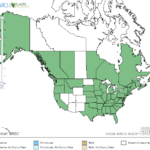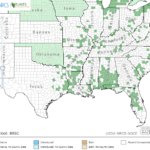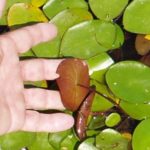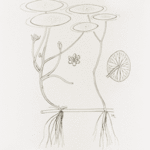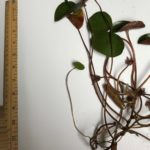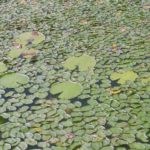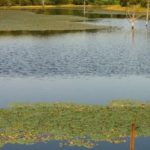Brasenia schreberi
USDA, NRCS. 2018. The PLANTS Database (http://plants.usda.gov, 28 March 2018). National Plant Data Team, Greensboro, NC 27401-4901 USA.
Illustration courtesy of University of Florida/IFAS Center for Aquatic and Invasive Plants. Used with permission.
What is Water Shield (Dollar Bonnet)?
Physical Characteristics
Leaves:
- Alternate
- Leaf stalks long
- Shield- or oval- shaped
- Floating
- Smooth on top
- Jello-like on bottom
- Up to 4 inches long
Flowers:
- Grow from the axil
- Small
- Dull-purple in color
- 3-4 petals and sepals each
- 0.39-0.59 inches long
- Anthers release pollen toward the inside of the flower
Fruit:
- Club-shaped
- Leather texture
- Does not split to release seeds when ripe
- 0.23-0.31 inches long
Stem:
- Slender
Roots:
- Slender
- Rooted in mud
Where Does it Grow?
Water shield can be found in lakes, ponds and quiet streams.
Pros and Cons of Water Shield
Water shield seeds are consumed by ducks and other waterfowl; while the roots and stems are consumed by muskrats and nutria. Submerged portions of all aquatic plants provide habitats for many micro and macro invertebrates. These invertebrates in turn are used as food by fish and other wildlife species (e.g. amphibians, reptiles, ducks, etc.). After aquatic plants die, their decomposition by bacteria and fungi provides food (called “detritus”) for many aquatic invertebrates.
